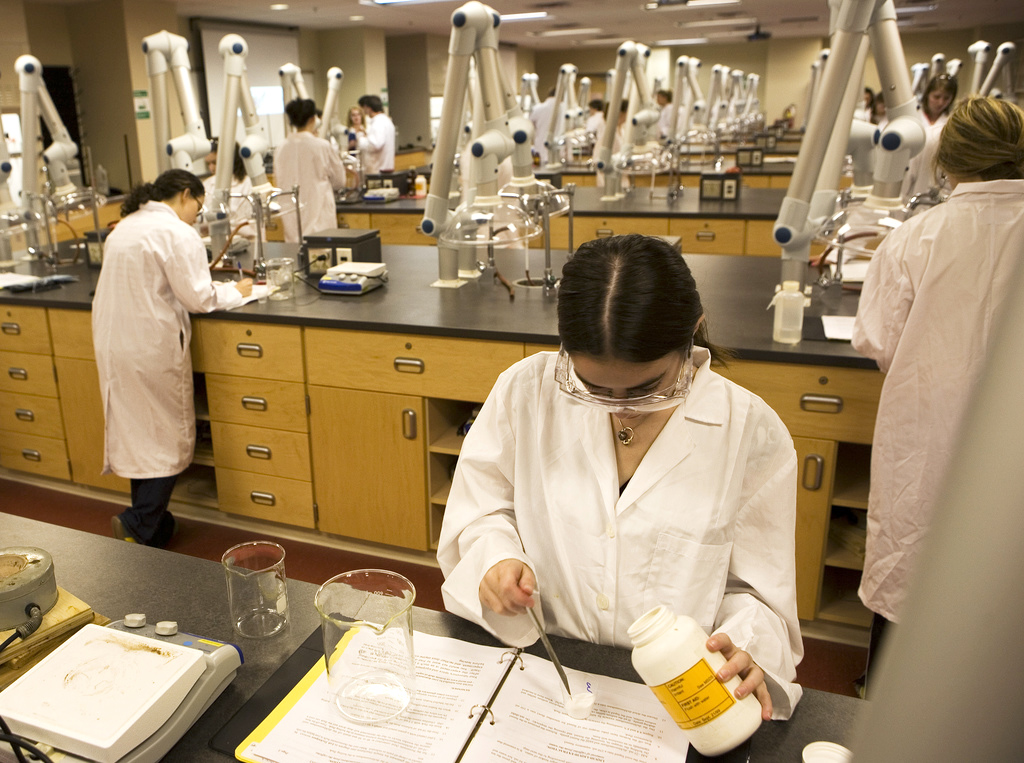University of Maryland researchers have identified two genes linked to flesh-eating bacterial infections, which could lead to a treatment for the life-threatening contaminations.
The project is a collaboration among 10 researchers from this university and the University of Maryland School of Medicine in Baltimore.
The bacteria were identified as a strain of group A streptococcus, which usually manifests as a mild bacterial infection of the throat, said Kevin McIver, one of the researchers.
“The problem is in rare cases the bacteria can get into the deep muscle and tissue and become life-threatening,” said McIver, a cell biology and molecular genetics professor at this university. “The spread of infection happens very fast at that point, but no one knows why the bacteria do that and it leaves us not knowing how to treat the infection.”
[Read more: During the solar eclipse, a UMD group launched a weather balloon to run experiments]
More than 500,000 deaths occur each year across the world because of these life-threatening infections, according to a 2005 study on group A strep disease.
The researchers hope to see if these two genes could be used as targets for vaccines or antibiotics, added McIver, whose lab was used for the research.
“Strep is easy to get rid of in this country, but in developing countries there’s a huge amount of infections due to the lack of modern health care, so it’s a completely different story over there,” said Yoann Le Breton, the first author of the study and one of McIver’s research assistants. “Hopefully our research will help those areas lower their rate of infection too.”
Freshman Nick Warnick said this research is important for the future of medicine, but also for college students.
“This research is really cool because it directly relates to college students,” said Warnick, a family science major. “Bacterial infections do occur, especially on a college campus and especially with the dorm showers, too.”
Originally, the researchers identified more than 200 genes that could be involved in flesh-eating bacterial infections, but decided to focus on two as a starting point.
To get that list of genes, they used transposons, known as jumping genes, because they can physically move within DNA and mutate it. To find the genes that caused mutations, the researchers performed transposon sequencing, which is used to find out where the genes currently are and what their function is, on the entire set of genes studied for the strep strain.
[Read more: A UMD center signed a $64.8 million agreement with NASA to expand its Earth systems research]
The researchers used a transposon called Krmit — named for alumnus Jim Henson’s character Kermit the frog — to generate a collection of mutants in the group A streptococcus strain. Henson died of toxic shock syndrome in 1990 following pneumonia caused by the strain of strep studied in this research.
The mutant strains were injected into mice, and researchers were able to identify the list of more than 200 genes that could potentially help to create infections in soft tissue.
“The idea was to create a library of mutants from tens of thousands of genes,” Le Breton said. “We wanted to understand which genes are activated during the infection process and how the bug survives and reacts to its environment during an infection, all so we can figure out how to design proper vaccine products.”
Next steps include creating potential therapies for strep and flesh-eating bacterial infections from those two genes as well as researching the rest of the genes found that could possibly be linked to creating severe infections under the skin, McIver said.
The research, which the National Institutes of Health funded with a $375,000 grant, was seven years in the making, McIver said, adding that he’s been researching this topic since 1999.
“Right now less than 10 percent of [NIH] grants are being funded,” McIver said. “Getting funded indicates the scientific community recognizes the work, trusts us to do the work properly and find discoveries. It’s a great feeling.”



